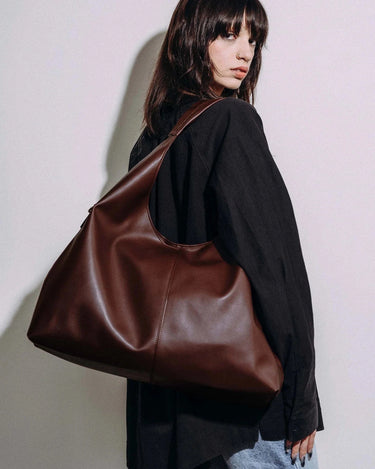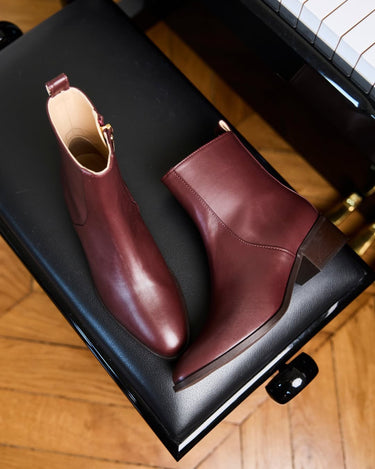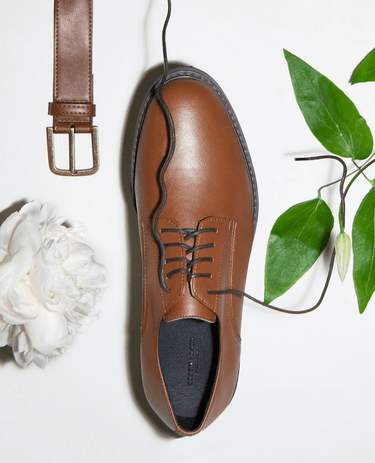The Problem With Down: How To Choose Bird-Friendly Outerwear
There are some winter staples that never go out of style. Season after season we see certain styles returning – in a new guise, certainly, but at their core still the same. The puffer jacket is one of those pieces. Reassuring and protective, it's one of those winter design that never dates. Until you learn about what goes into making some of them – namely those made with bird feathers.
By Sascha Camilli: writer, speaker, activist, and vegan fashion expert.
Down feathers are soft, quill-less feathers that grow next to the chests of geese and ducks. Sought after by the bedding and sleeping-bag industries, down is overwhelmingly used in puffer jackets. But as often happens when animals are used in fashion production, the down industry is rife with cruelty and abuse.
Geese are loyal animals. They mate for life, and if a goose's mate gets ill, they will stay by their side even if their flock flies to a different destination. But in the factory-farming system, animals don't get to display any of their loyalty or their other natural behaviours. Commonly, geese and ducks in factory farming live in cramped sheds with thousands of birds, often in dirty conditions, standing in their own excrements. For ducks, who are meticulously clean animals, that is only one of the many factors that make living in factory farms unbearable.
Down is only meant to be taken from birds' bodies once they have been slaughtered for meat. But in the industry, live-plucking is a common occurrence. This procedure, which is repeated several times per year, aims to maximise the yield of a single bird. Workers pin down the terrified birds and tear the feathers out of their skin, often leaving bloody wounds. It's very common for the animals to get injured in the process.
The Responsible Down Standard, a Textile Exchange initiative, sets out to prohibit live-plucking, among other things. But undercover investigations have shown that despite these assurances, the lack of transparency in the supply chain makes it very difficult to be certain that no live-plucking has taken place, and live-plucked down can in fact be present in certified products. And live-plucking isn't the down industry's only problem. Undercover investigations have found ducks decapitated and electrocuted, reminding once again that "responsible" standards and certifications are marketing tools designed to make consumers feel better about their purchases, without really making any long-lasting impact on animals' wellbeing.
Recently, companies and retailers have been waking up to the suffering of animals for the down industry. Fashion giant H&M vowed to phase out all newly produced down from their collections by the end of 2025, choosing to stick to recycled only. PETA, who campaigned for H&M to ban down, rejoiced at the news. “H&M’s compassionate decision is a big win for ducks and geese,” says PETA Vice President of Corporate Projects Yvonne Taylor. “PETA celebrates this forward-thinking move and urges retailers everywhere to follow suit and stop profiting from the cruel feather industry.” Other companies that have said no to down include the SMCP group, which carries the Parisian-chic brands Sandro, Maje, and Claudie Pierlot. Sustainable fashion queen Stella McCartney is outspoken against the use of feathers, most recently by leading PETA's Feather-Free Pledge, wherein designers and retailers promise to never use these materials again.
Replacements for down are mainly made from recycled synthetic insulation materials. Brands to note include VEGAN Happy and Protected Species, both of whom use recycled plastic and recycled polyester in their sleek vegan jackets. Komodo's outerwear range also incorporates recycled fillers - as well as using organic cotton. Outdoor brands are also turning to high-performance down-free fillers such as Primaloft and Thermal R to replace animal feathers - both of these replacements are based around recycled materials. Innovative solutions include Pangaia's FLWRDWN material made form wildflowers combined with aerogels. This material has also been experimented by H&M before their ban on new feathers came into place. Kapok fibres, made from the seed pods of ceiba trees, are another completely biodegradable option when it comes to replacing feathers. Once again, nature and innovation are both leading us away from cruelty - we have nothing to do but to follow.
By Sascha Camilli
About Sascha
Sascha Camilli is a vegan writer, speaker and activist. Her book Vegan Style is out now on Murdoch Books. For more about Sascha, you can read our interview with her or sign up to her newsletter Kind of Wild.
Cover image by Vincent van Zalinge via Unsplash. Second photo by Komodo. Final photo by VEGAN Happy.
For more great content like this in your inbox, sign up to our newsletter, and save 10% off your next purchase, plus great savings throughout the year.
Related Articles

Vegan Christmas Gifts For Him

Vegan Christmas Gifts For Her

















































































































